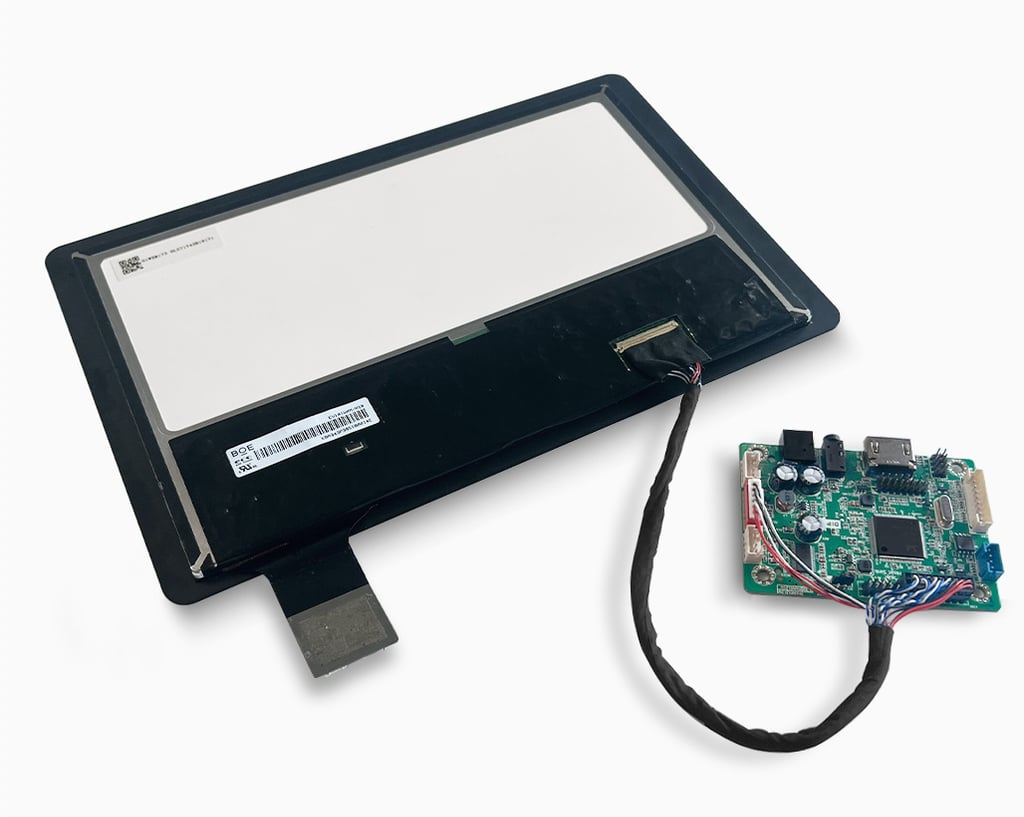The Evolution of Industrial Touch Screens: From Resistive to Capacitive
Touchscreen technology has come a long way since its inception, evolving from simple resistive touch panels to the highly responsive capacitive screens used today. This transition has significantly improved usability, durability, and efficiency in industrial applications.
2 分読む


The Rise of Resistive Touch Screens
Resistive touchscreens were the first widely adopted touch technology, particularly in industrial environments. They work by detecting pressure from a finger, stylus, or any object pressing against the screen. Composed of multiple flexible layers, resistive screens offer:
Affordability – Cost-effective and widely available.
Glove-Friendly Operation – Works with gloves or any input device.
High Durability – Resistant to contaminants like dust and liquids.
However, resistive touchscreens have limitations, such as lower touch sensitivity, lack of multi-touch functionality, and reduced optical clarity due to multiple layers.
The Shift to Capacitive Touch Technology
Capacitive touchscreens revolutionized the industry by offering enhanced responsiveness and a sleek, modern interface. Unlike resistive screens, capacitive screens rely on the conductive properties of human touch, allowing for:
High Sensitivity & Multi-Touch Capability – Supports gestures like pinch-to-zoom and swiping.
Improved Optical Clarity – No extra layers, resulting in better display quality.
Longer Lifespan – More resistant to wear and tear.
Despite these advantages, capacitive touchscreens require a conductive touch (such as bare fingers or specialized gloves) and can be more expensive than resistive alternatives.
Industrial Applications: Choosing the Right Technology
Industrial environments demand reliable and durable touchscreens, and the choice between resistive and capacitive depends on the application:
Manufacturing & Automation – Capacitive screens dominate due to their multi-touch capabilities and responsiveness.
Medical Equipment – Capacitive screens are preferred for their hygiene-friendly smooth surfaces, but resistive screens remain common for their glove compatibility.
Outdoor & Rugged Environments – Resistive screens are still popular due to their resistance to extreme conditions.
Future Innovations in Industrial Touchscreens
As touchscreen technology advances, industrial displays continue to improve in terms of durability, customization, and integration with smart factory systems. Emerging trends include:
Projected Capacitive (PCAP) with Glove-Touch Technology – Combining capacitive sensitivity with glove-friendly operation.
Optical Bonding for Better Visibility – Reducing glare and improving touchscreen readability.
Enhanced Durability with Ruggedized Glass – Strengthened screens resistant to impact and harsh conditions.
Conclusion
The transition from resistive to capacitive touchscreens has brought immense benefits to industrial applications, offering enhanced usability, durability, and efficiency. However, each technology has its place, and choosing the right touch solution depends on environmental conditions and operational needs.
At STOUCH, we specialize in industrial-grade touchscreens tailored to various industries. Contact us today to find the best touchscreen solution for your application!
Get in touch
Display Solutions
Custom touch displays for industrial and medical solutions Specific to Your Needs.
Quality First
Expert in touch panels
15 Years in Touch Solutions | Your One-Stop-Manufacturer | STOUCH © 2024. All rights reserved.
